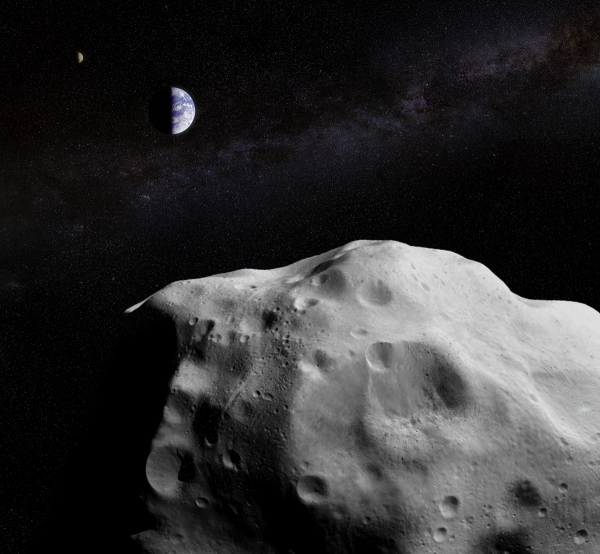
It happens every time: an asteroid is slated to make a perfectly safe pass by Earth on its route around the Sun, like everyone else, but the tabloid “news” sites take the opportunity to start screaming bloody horror about the upcoming “near miss” and “terrified” NASA scientists etc. etc. It’s awfully tiring and even more predictable than the asteroids’ orbits themselves. I’d usually ignore such things except that they have the unfortunate side effect of actually 1. garnering a lot of attention, at least for a short period of time; and 2. scaring the bejeebers out of people who may not follow real space science news as much as I do. (Which is a lot of people.) So in an attempt to sort out any confusion I’ll say for the record:
There is no need to worry about asteroid 2014 YB35. It will safely pass by Earth on March 27, 2015 at about 4.5 million kilometers, or 2.7 million miles… 11.7 times farther than the Moon.
(And if that sounds like a long way away, that’s because it is.)
YB35 is fairly big, sure… over 500 meters or a third of a mile wide. But it won’t hit Earth, it won’t hit the Moon, it won’t explode or cause earthquakes or tsunami or spoil your milk or do anything but soar by at a zippy 10 kilometers per second. NASA isn’t terrified or “on alert”…in fact it’s going to get some nice radar images of it as it goes by.
If anything, 2014 YB35 is our friend. We know it’s there, we’ll get to learn about it as it passes, and it’s safely reminding us to pay attention. (Sometimes we need a little reminder.)
Read the full story in my Universe Today article here.
The top picture was created by combining several actual images; one of Earth and the Moon as seen from NASA’s Galileo spacecraft, one of the main belt asteroid Lutetia from ESA’s Rosetta, and a background panorama of the Milky Way night sky from ESO and Serge Brunier. It’s not technically correct or anything, but I thought it looked nice and at least more accurate than those of fiery collision events.
*Note: 2014 YB35 is a PHA, or potentially-hazardous asteroid. This means that it’s larger than 150 meters and has an orbit that could bring it close enough to cross Earth’s at some point, but not necessarily that it will. It’s a scary name for a select few space rocks that have so far turned out to be harmless. But it’s still important to keep an eye on them.
Reblogged this on cameronstlaurent.
LikeLike
I love your posts, nice to hear from an intelligent science person… thanks for posting. I look forward to continued reading. Namaste
Michelle
LikeLike
Thanks. I try to be a voice of reason when I can!
LikeLike
Reblogged this on mayspitfire's Blog.
LikeLike